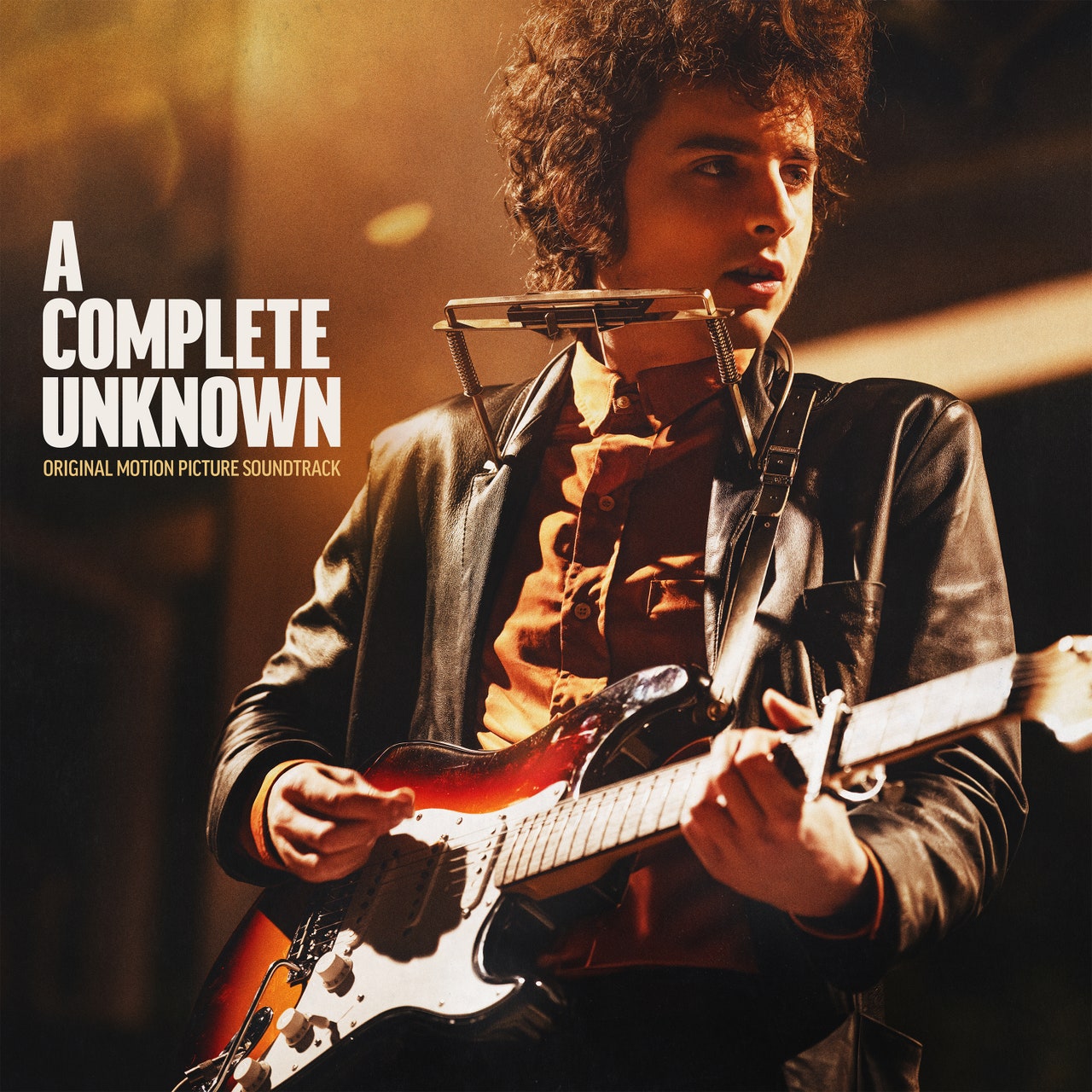From the second Timothée Chalamet gets spit out of a hitched ride at the edge of the George Washington Bridge in ragged clothes and a cabbie hat, clutching an acoustic guitar and a rucksack wandering the beat carnival on MacDougal Street, A Complete Unknown is, as the biopic form requires, a two-hour compression of music mythology that plays loose with facts. And every minute is a total blast. Digging straight into the exaggerated fable of how Bob Dylan “went electric” at the Newport Folk Festival in 1965 and drew a line and cast a curse—in two hours and dozens of eternal songs performed, at Chalamet’s insistence, live on set—A Complete Unknown is a pitch-perfect fiction made of history that will never stop changing.
If there is a moment in A Complete Unknown that could move a Bobcat to tears, it comes in these opening scenes. After the young prodigy blown in from the Midwest cons a taxi driver into taking him to a New Jersey hospital to visit his ailing hero Woody Guthrie—the radical folk singer-songwriter 29 years his senior—Dylan plays an early original at his bedside. Performing “Song to Woody” for Guthrie and his one-time Almanac Singers bandmate Pete Seeger, Dylan repurposes an ambling, bittersweet melody from Guthrie’s own “1913 Massacre.” The 20-year-old songwriter’s ode to his Dust Bowl North Star is an explicit act of carrying history forward, protecting Guthrie’s ethos of collectivity through autonomy, telling a previous generation you understand that which could have easily been unknowable in the future.
Dylan is not yet channeling Ginsberg but “Song to Woody” is Whitman through and through, transcending time by tracing it backward and forward. “Here’s to the hearts and the hands of the men/That comeeee,” Chalamet sings, drawling the last syllable into a 10-second locked-eye stare, picking the guitar into a rolling low drone, “with the dust and are gone with the wind.” Hearing “Song to Woody” sung by the zillennial icon sends it towards its destiny: traveling on. It’s the closing track on A Complete Unknown’s soundtrack, but in the movie, it’s Chalamet’s first and only chance to convince us he can be Dylan, and he pulls it off: in his weary eyes, in his careful phrasing, in his unprecious trim of the lyrics, in the steadfast conviction of a guy with everything to prove.
To watch a Hollywood depiction of the most sanctified songbook in modern music—of the trickster, the prophet, the sage and liar, mainstream outsider, visionary pop poet, inspiration to the Beatles and the Black Panther Party, Nobel Prize winner—is a good time. (I saw Gerde’s Folk City in IMAX!) The songs carry the story. We don’t learn much about who Guthrie actually was besides in Dylan’s song about a world “that looks like it’s dyin’ and it’s a-hardly been born,” while the real stakes of the ’60s political contexts are mostly limited to a brief performance of “Masters of War.” The true mark left on Dylan by artist, activist, and red-diaper baby Suze Rotolo (named Sylvie Russo here at Dylan’s own request) feels thinly sketched in A Complete Unknown, but her impact on culture by way of introducing her then-boyfriend to the civil rights struggle and Brecht and Rimbaud are present in many of these folk standards, not least in the question marks X-raying our still depraved civilization in “Blowin’ in the Wind.”
